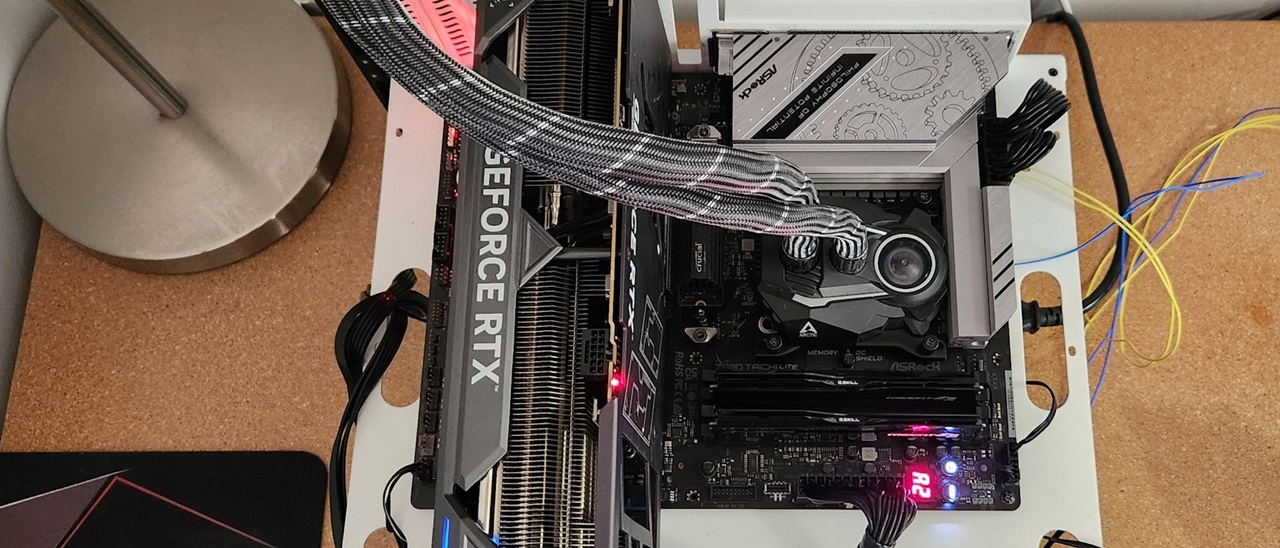Why you can trust Tom's Hardware
Benchmark Results and Final Analysis
Our standard benchmarks and power tests are performed using the CPU’s stock frequencies (including any default boost/turbo) with all power-saving features enabled. We set optimized defaults in the BIOS and the memory by enabling the XMP profile. For this baseline testing, the Windows power scheme is set to Balanced (default) so the PC idles appropriately.
Synthetic Benchmarks
Synthetics provide a great way to determine how a board runs, as identical settings should produce similar performance results. Turbo boost wattage and advanced memory timings are places where motherboard makers can still optimize for stability or performance, though, and those settings can impact some testing.
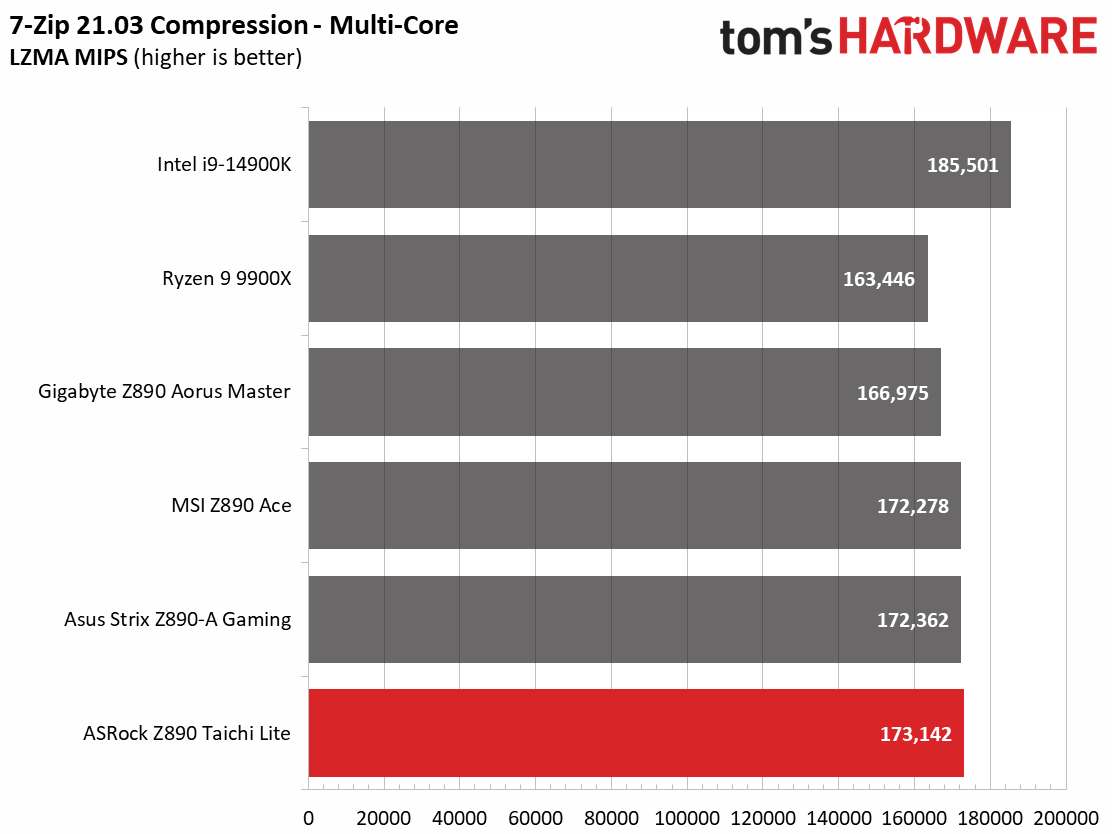
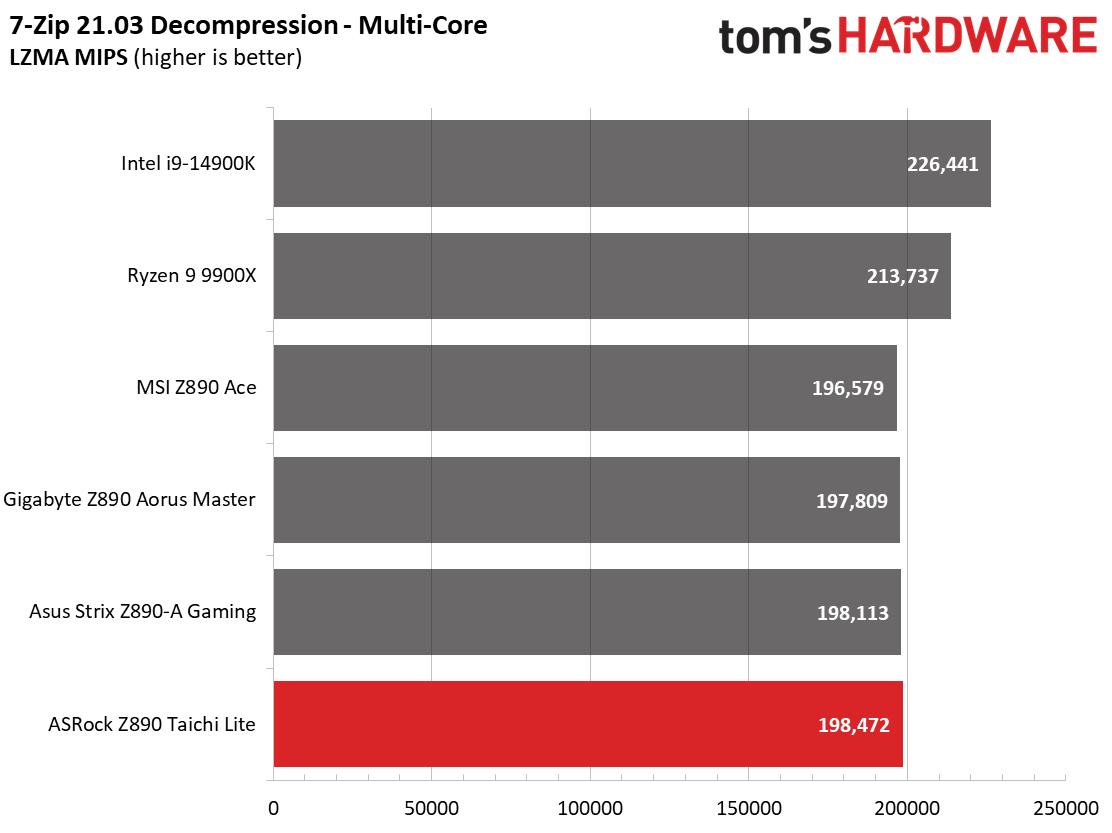
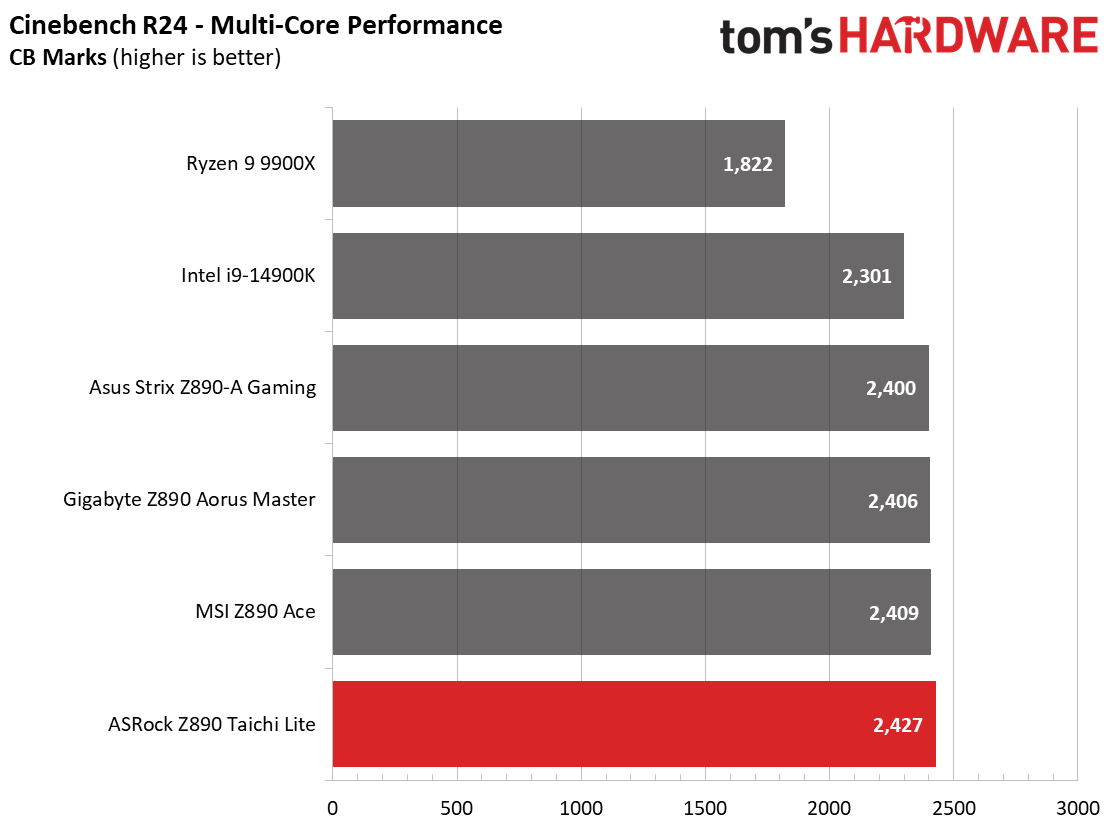
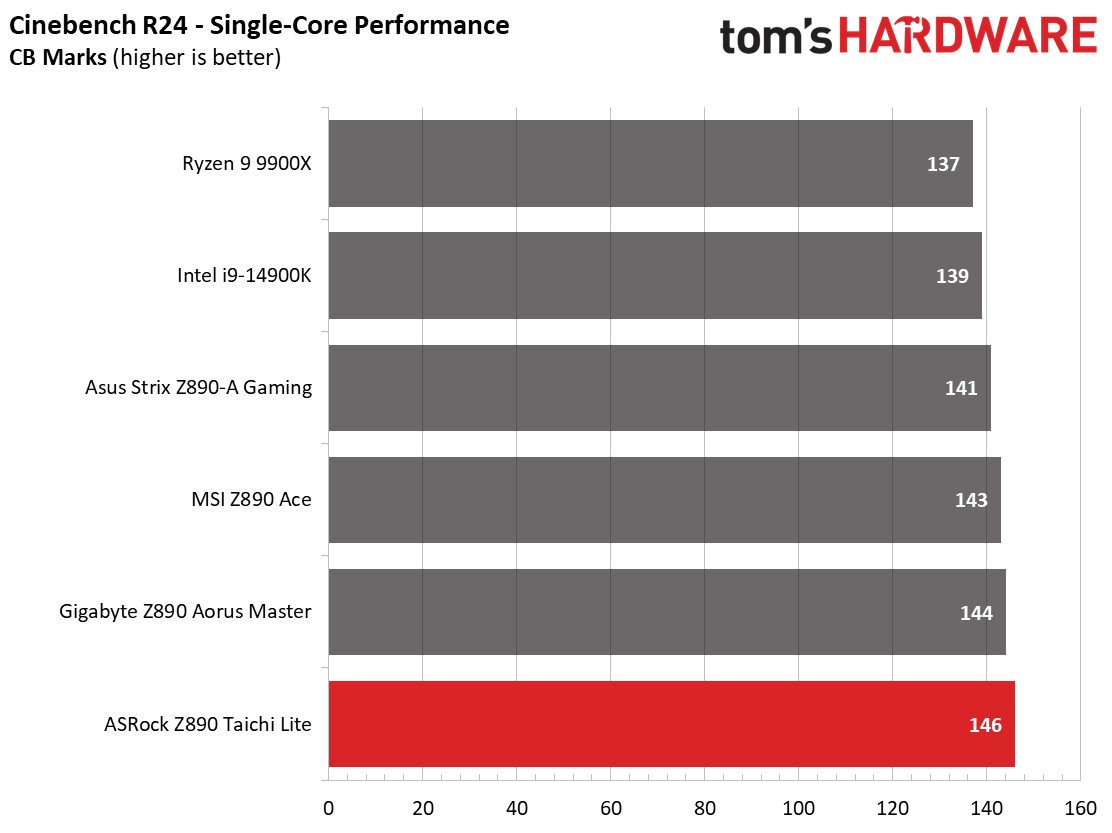
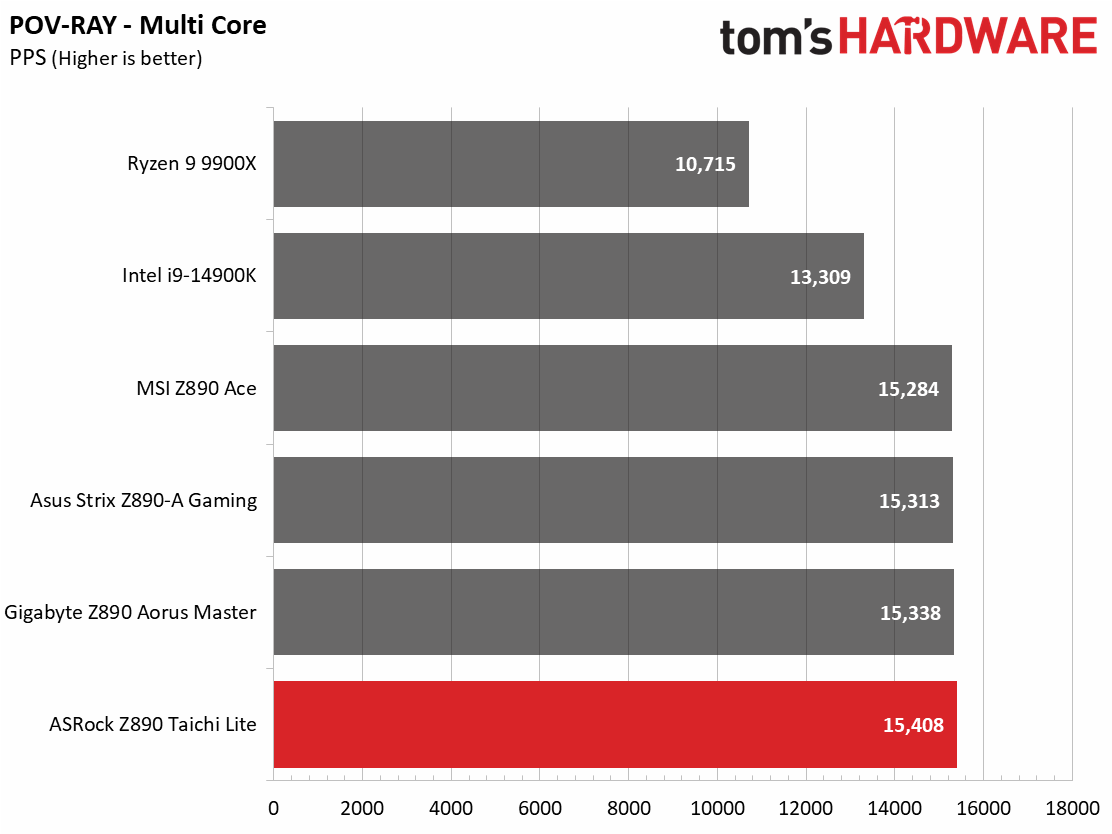
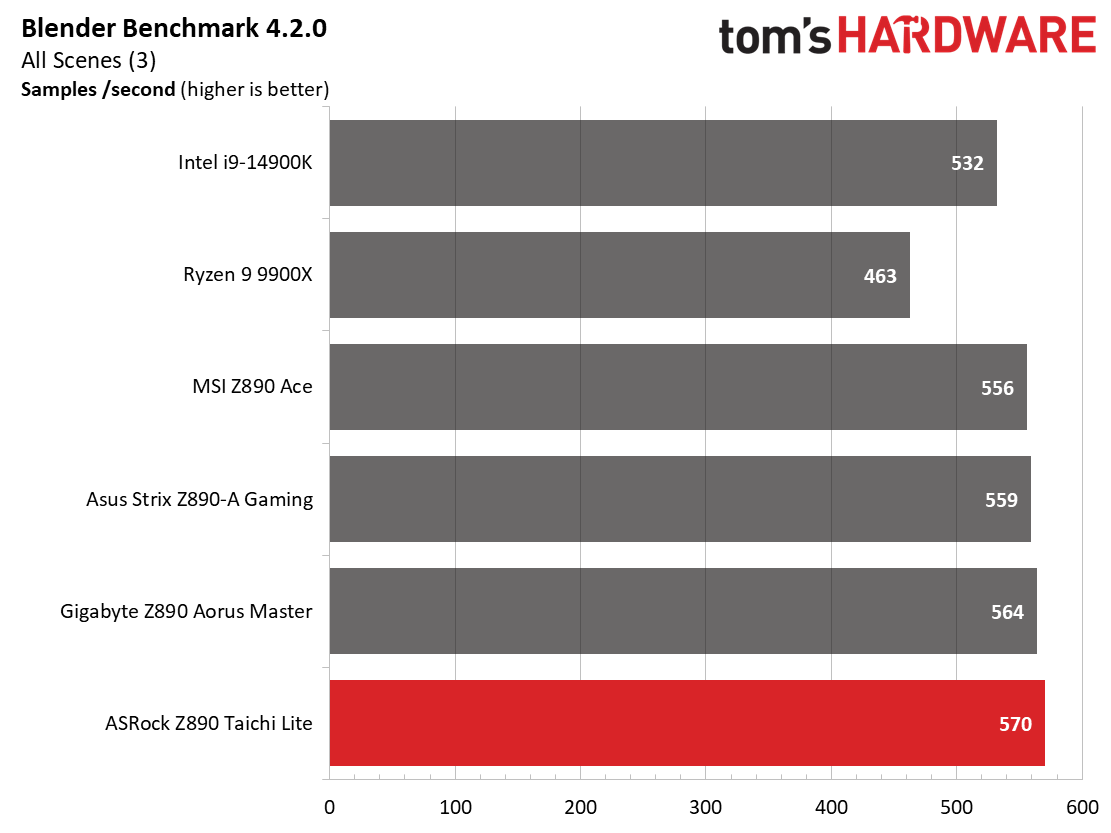
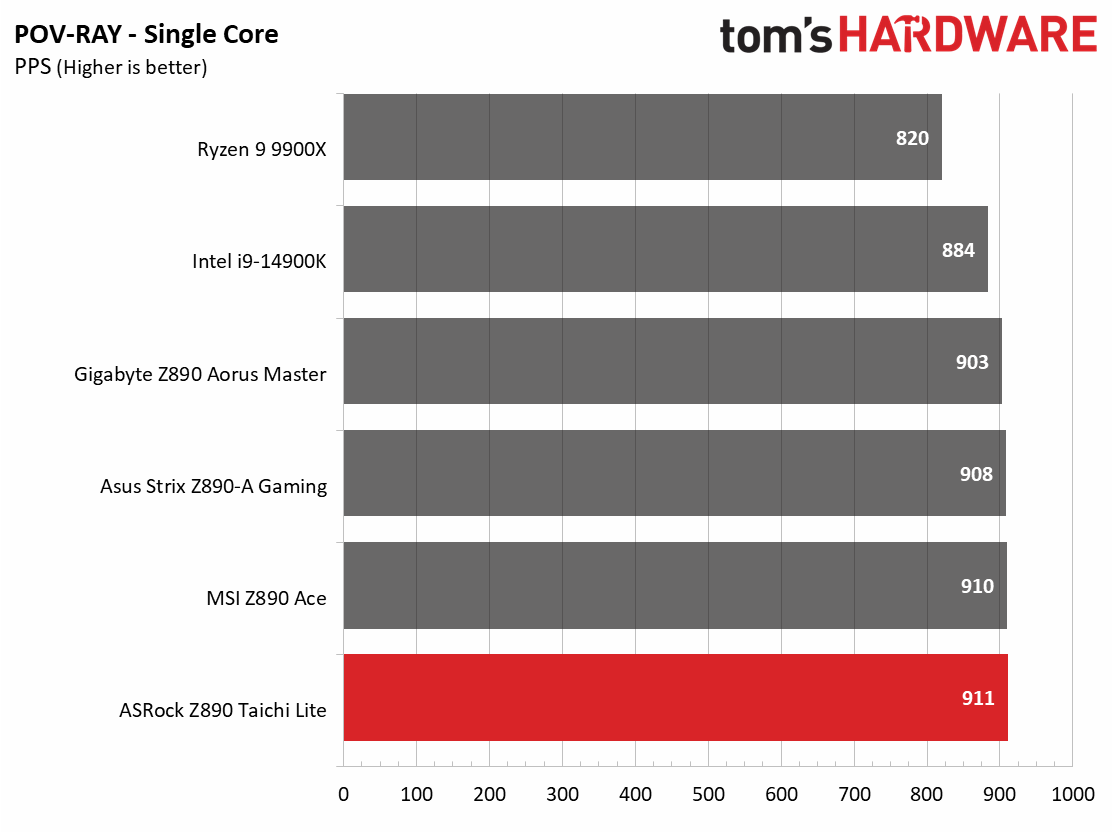
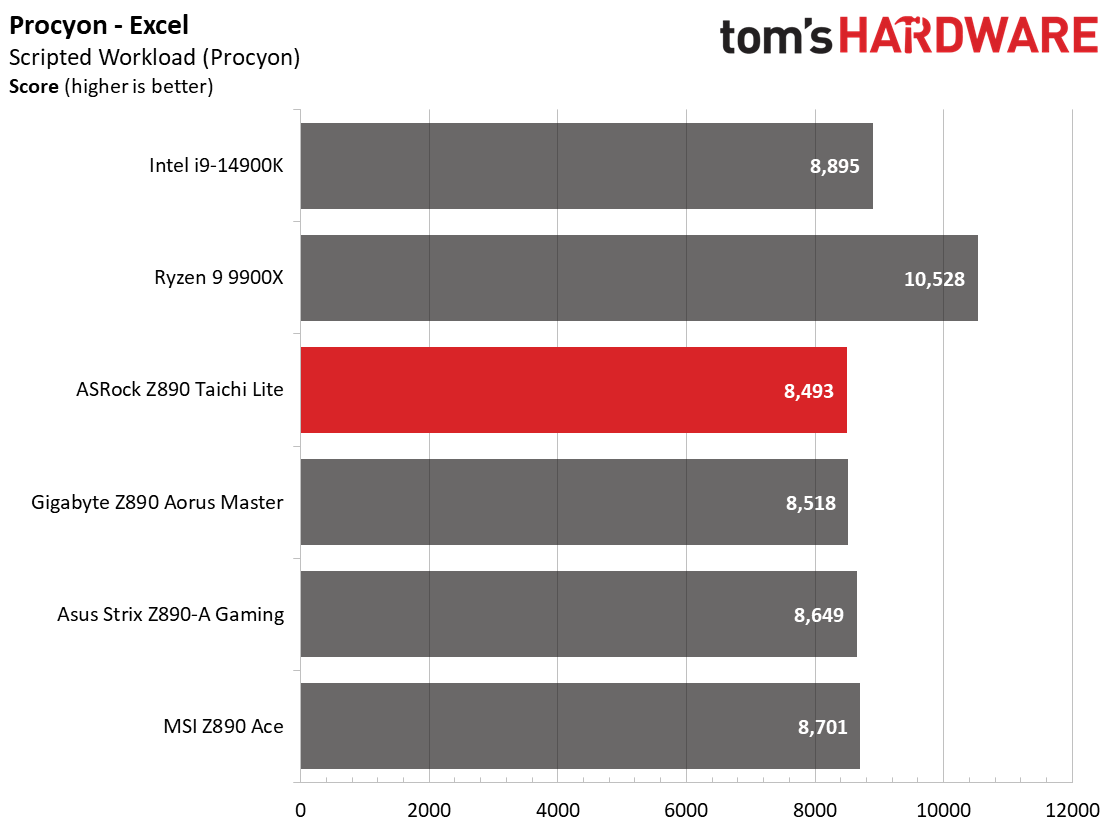
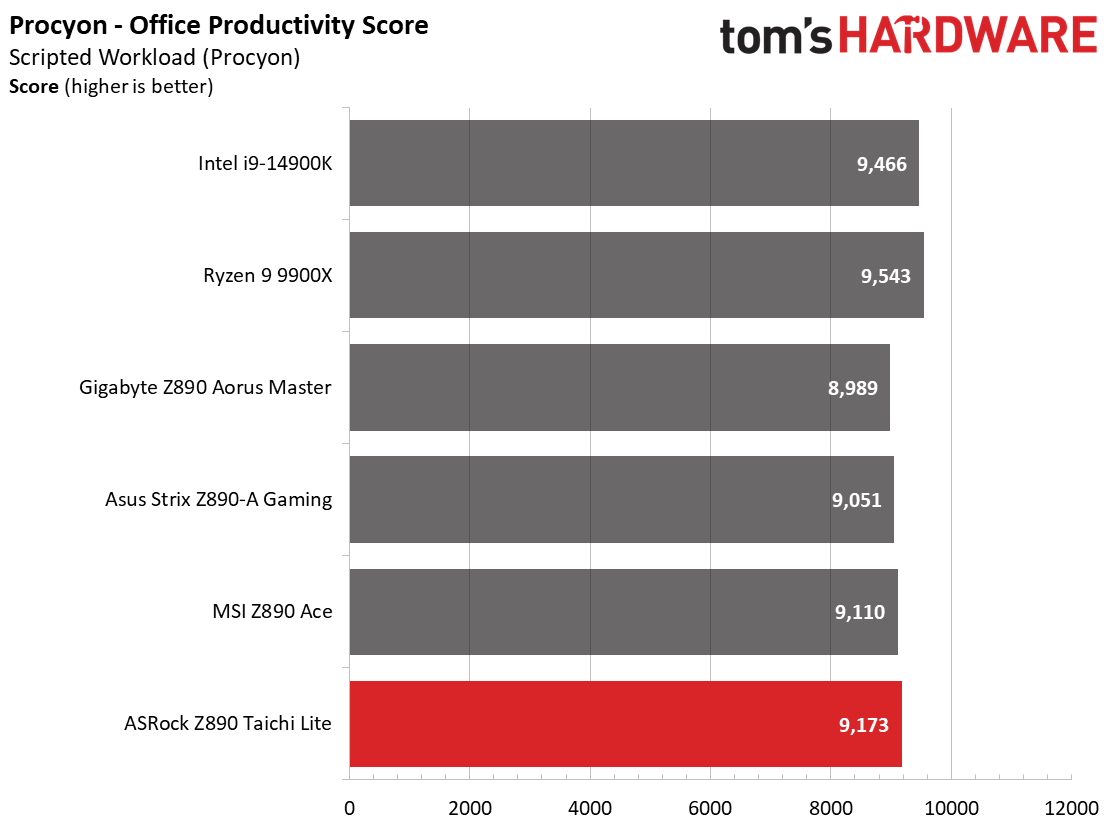
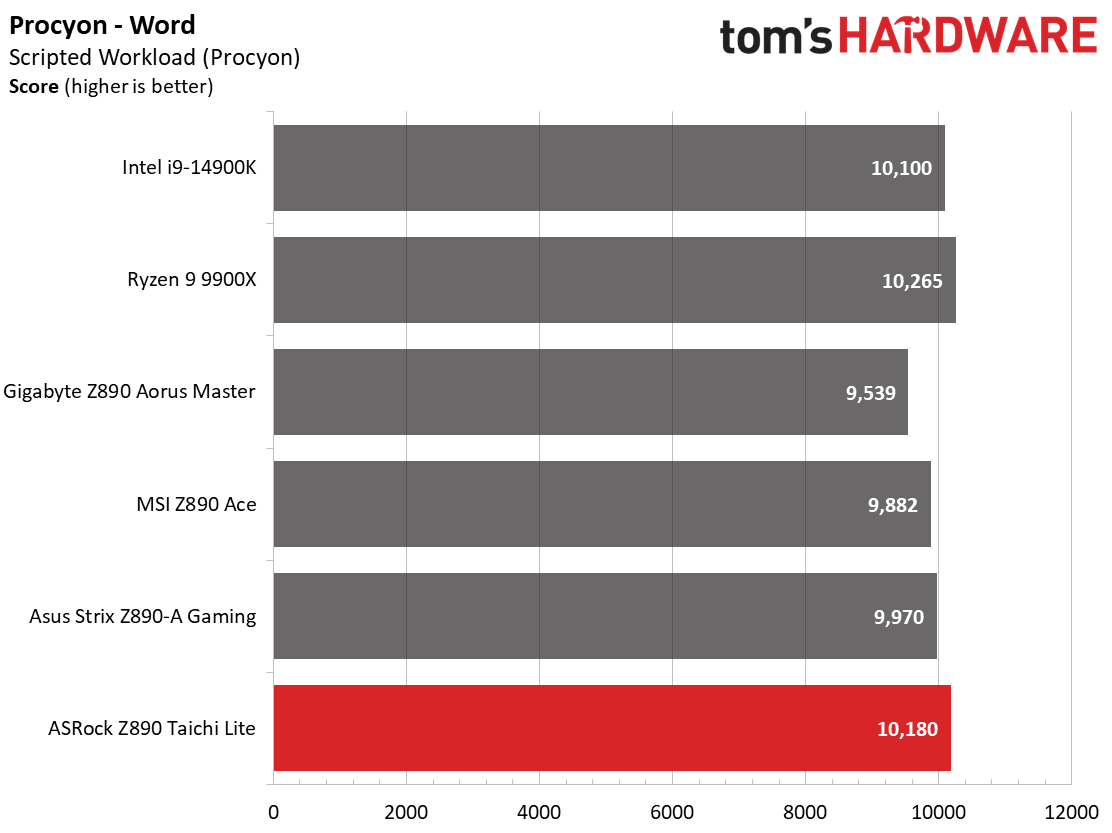
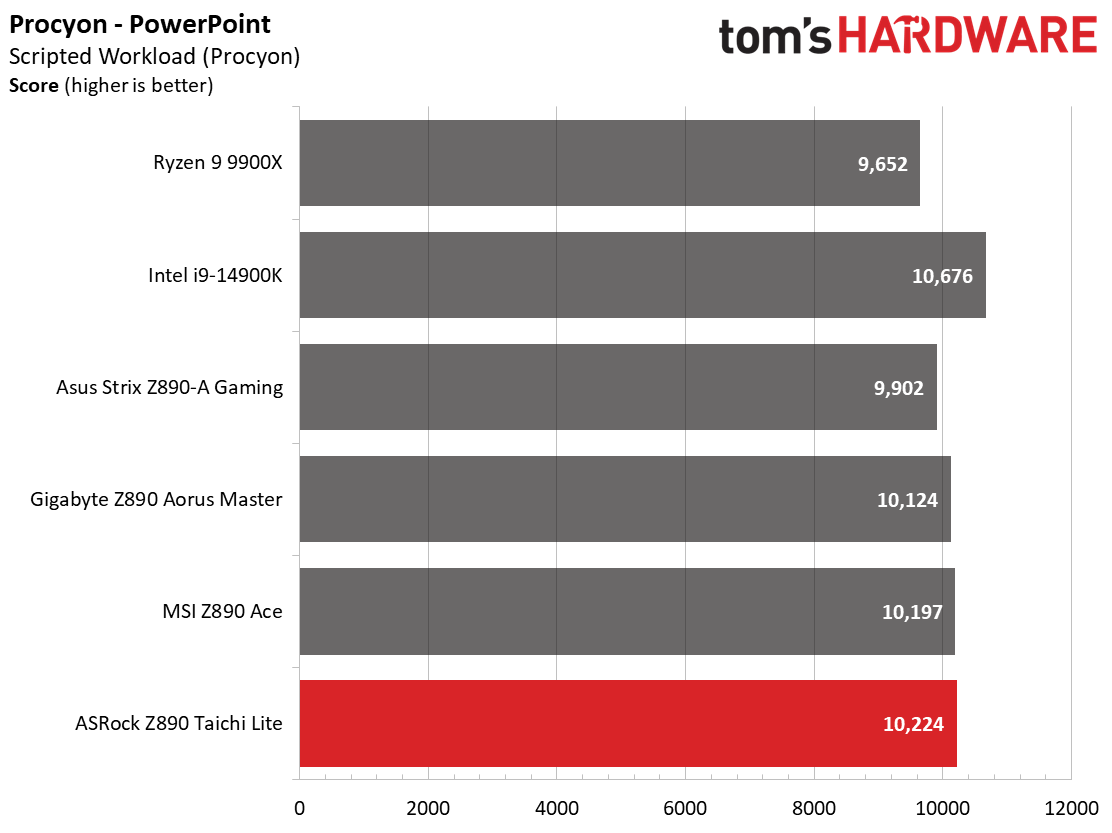
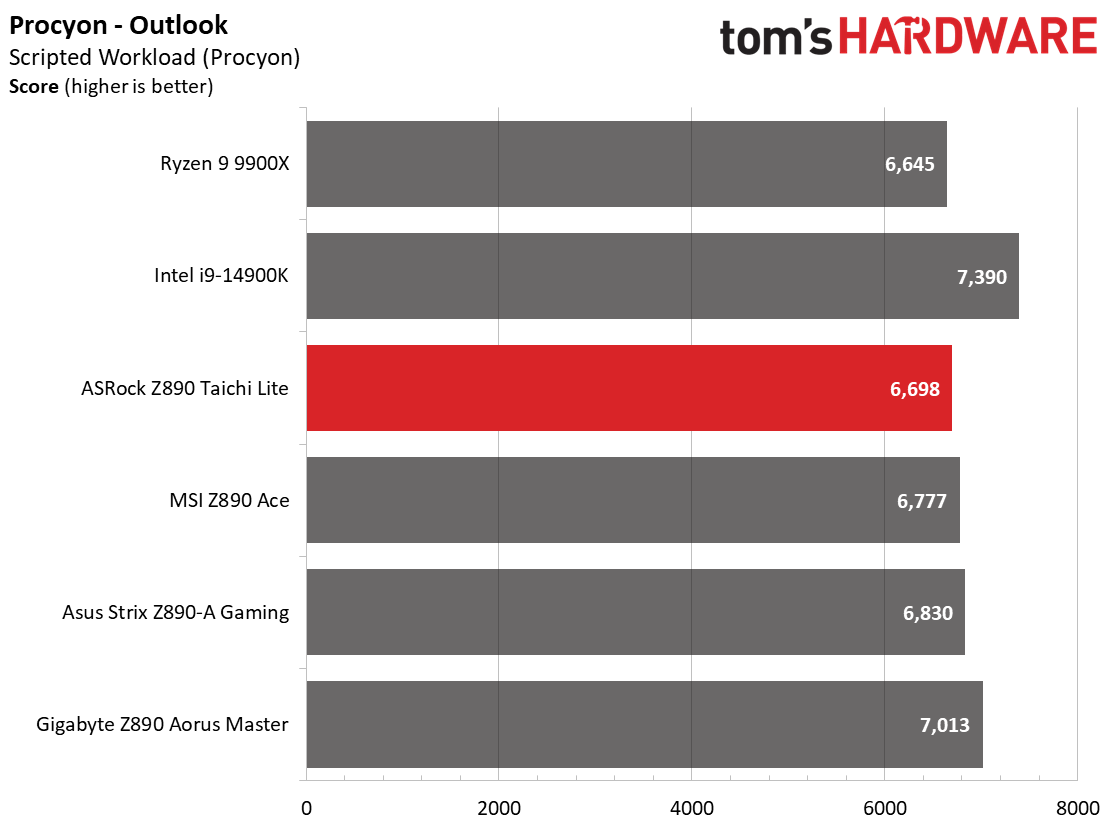
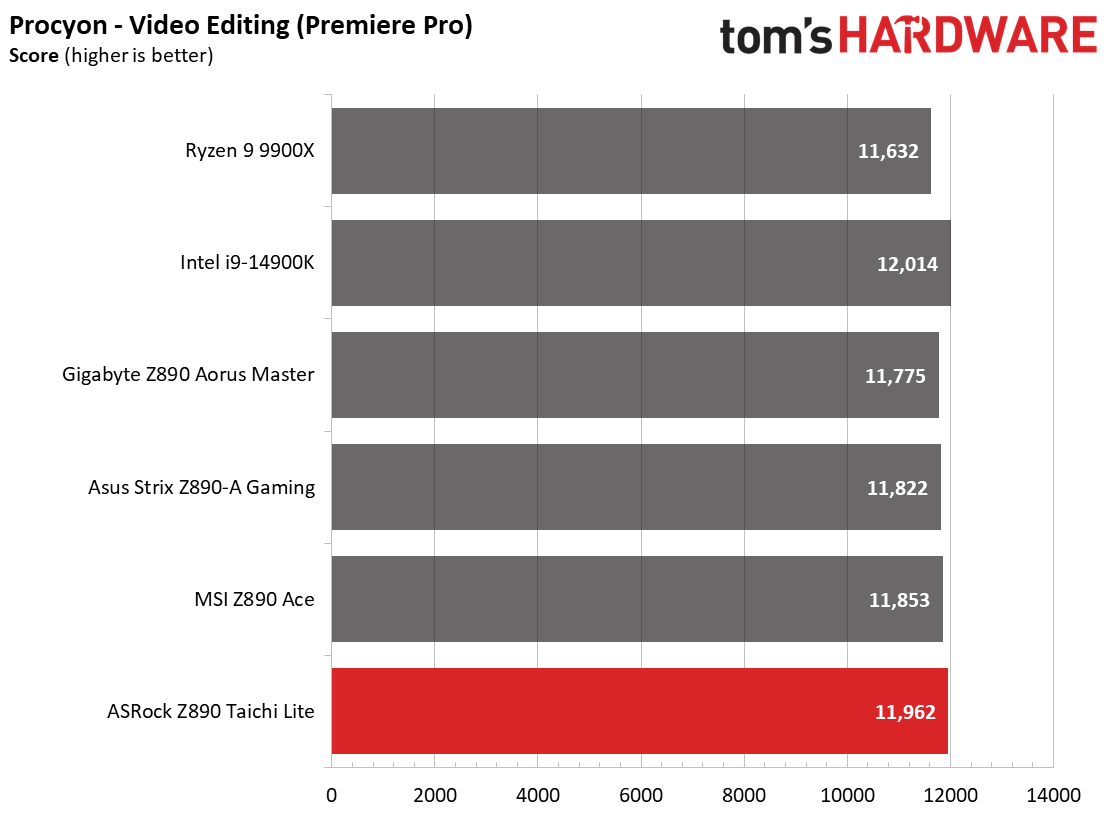
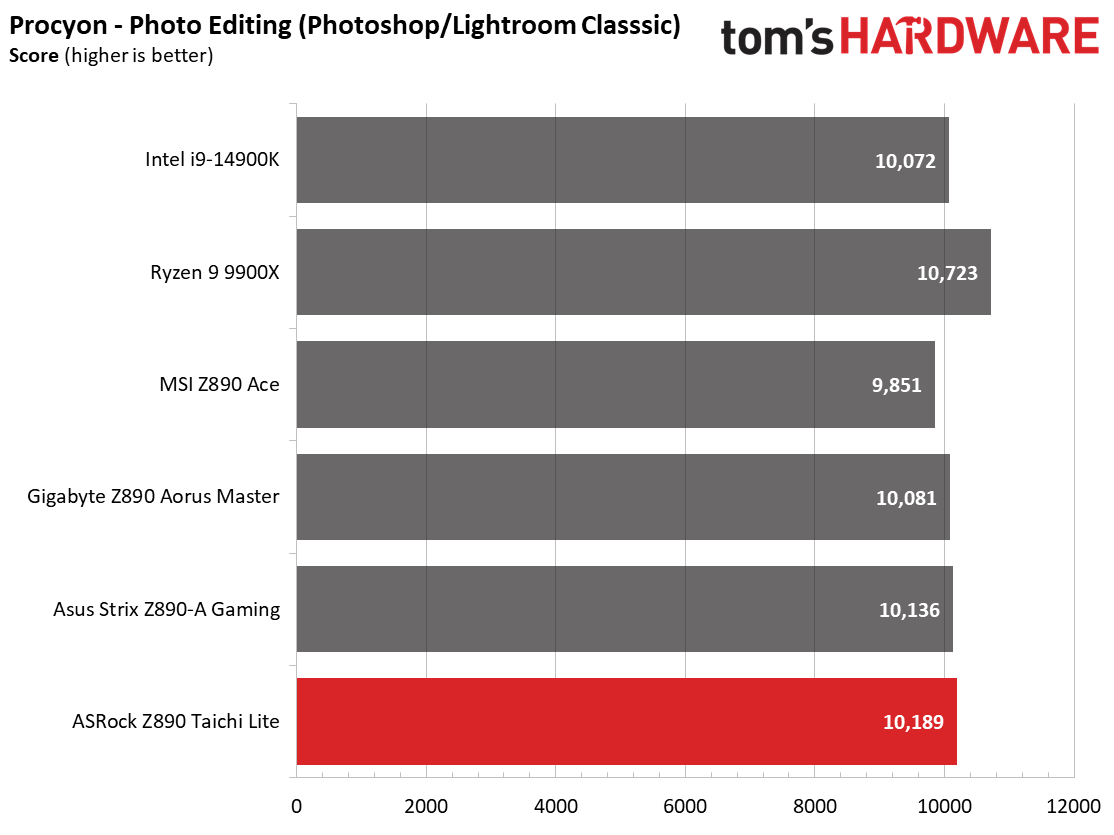
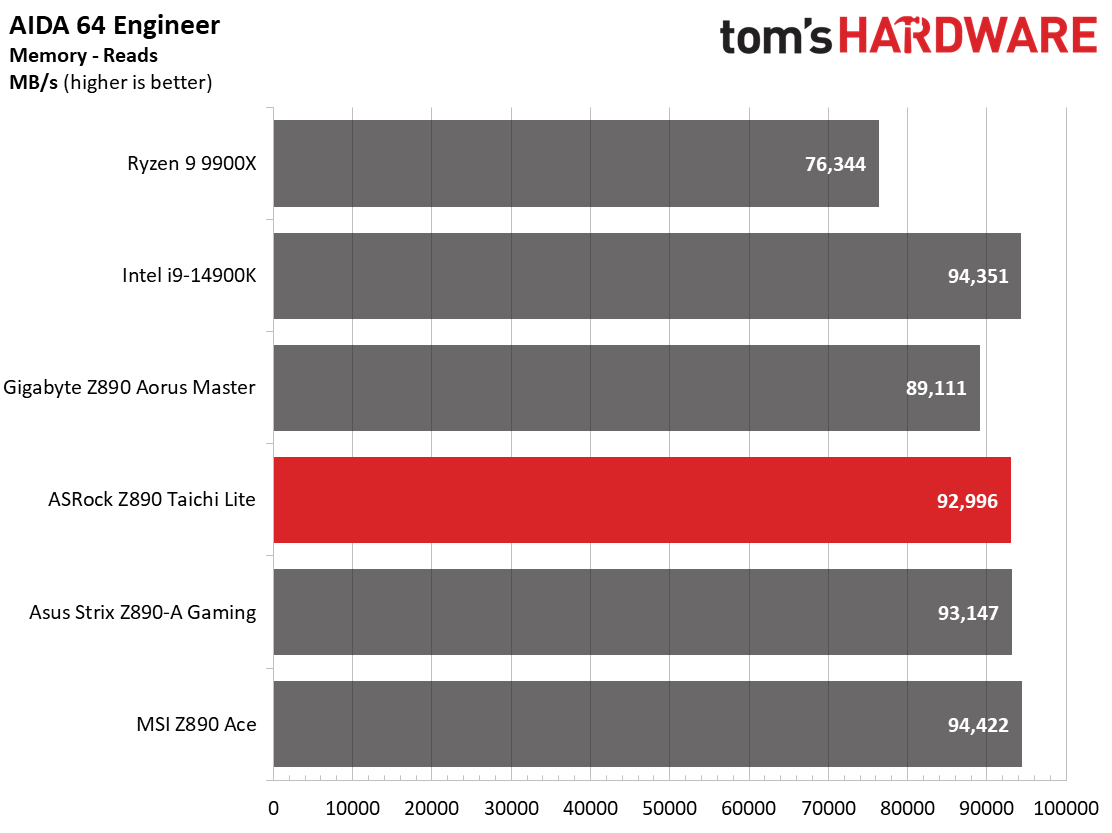
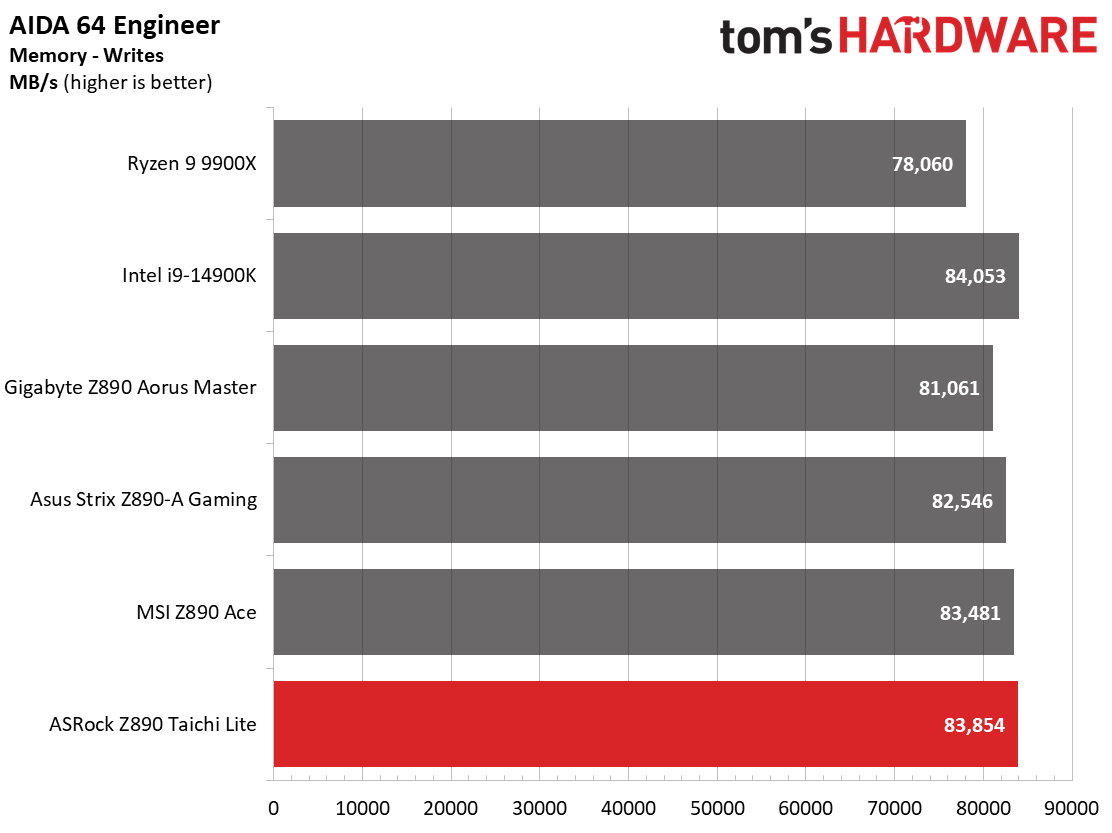
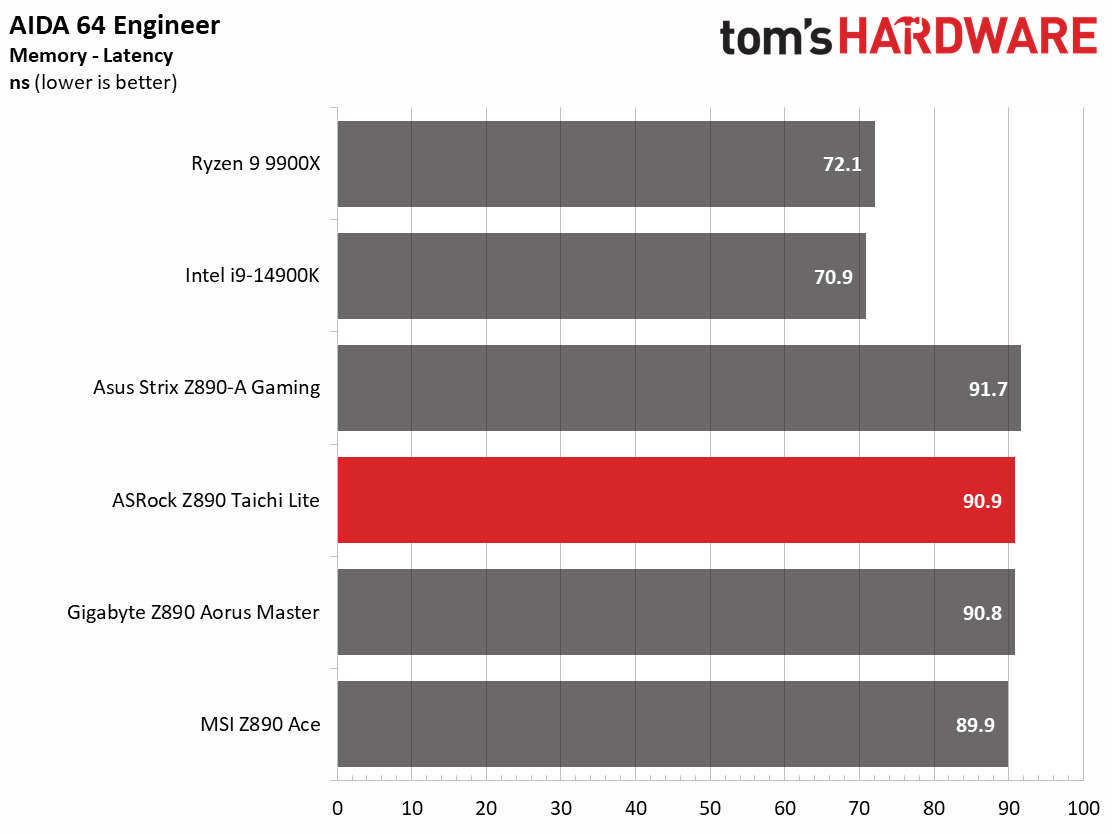
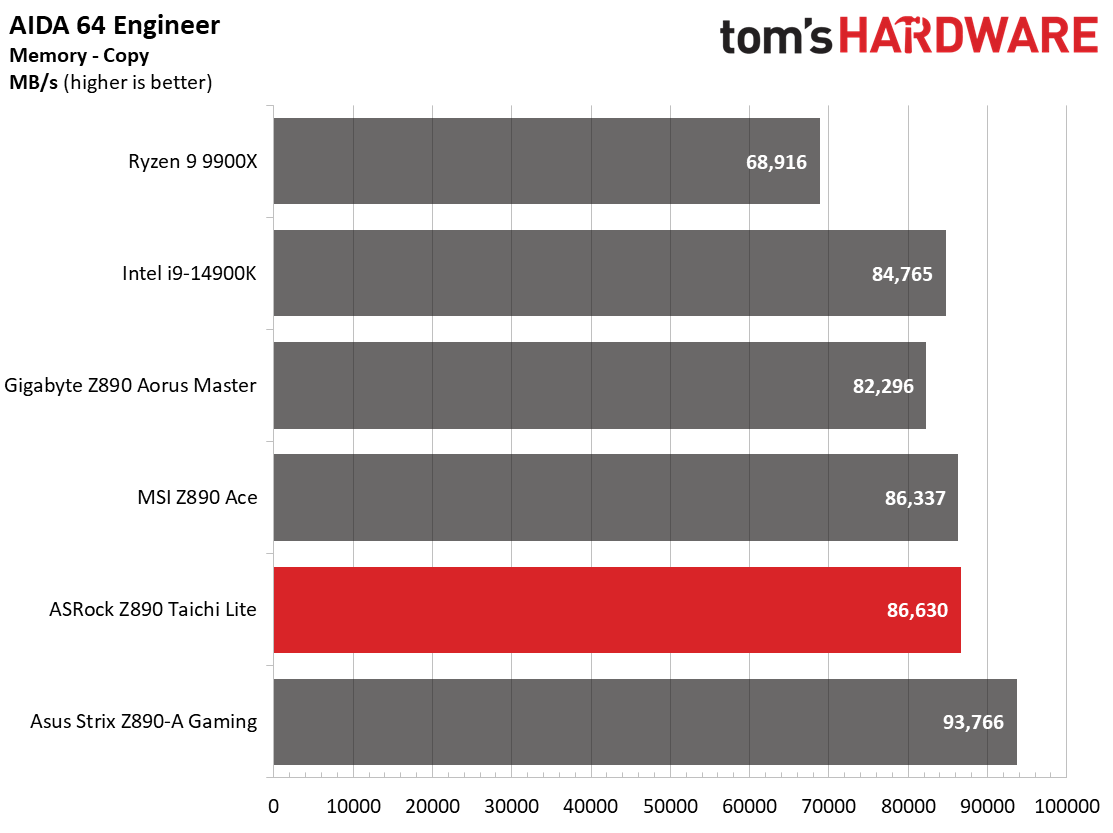
The Z890 Taichi Lite did very well across our benchmarks, often beating the other boards in these tests. Granted, many of the differences aren’t noticeable outside of these charts, but there’s something to be said for being one of the fastest among our data sets.
Timed Applications
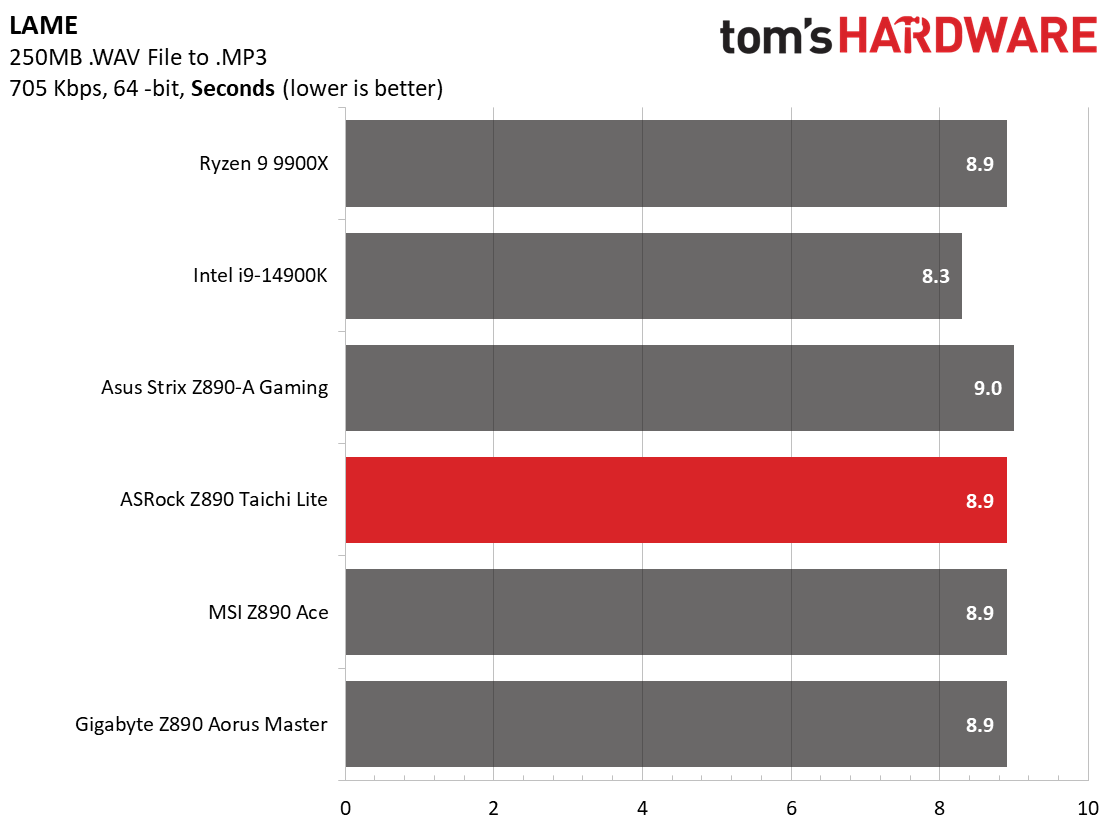
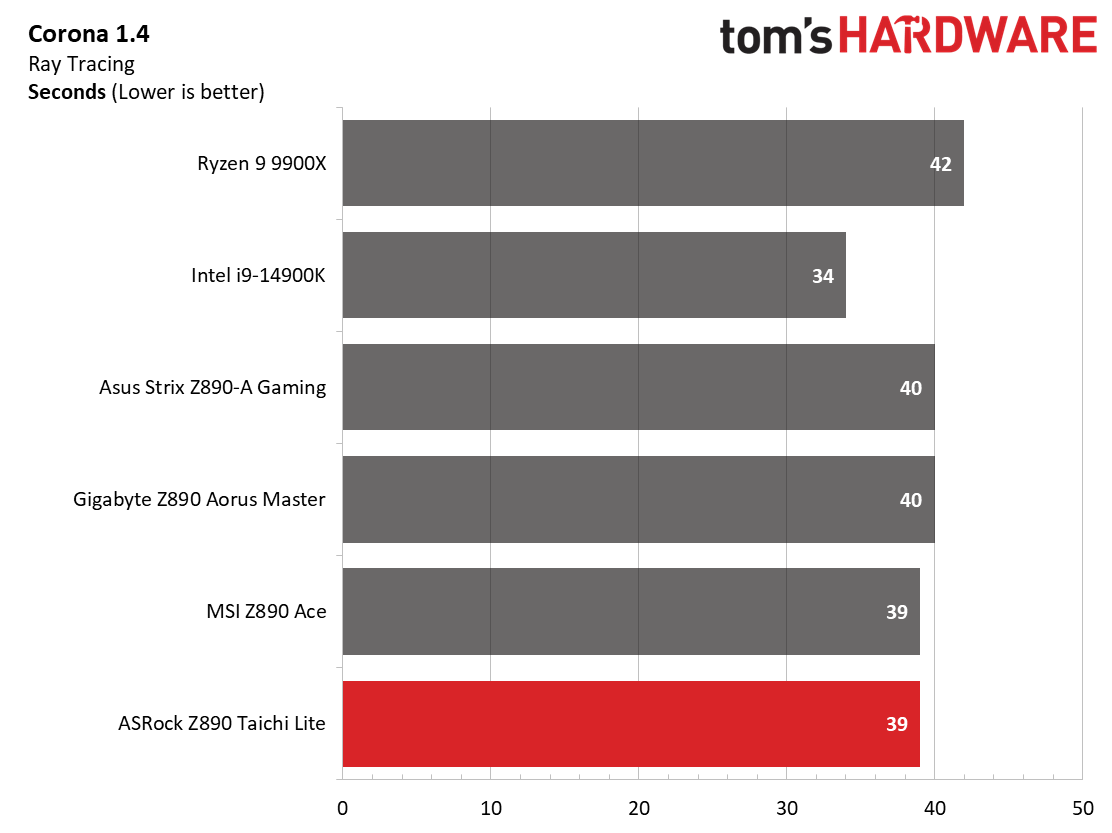
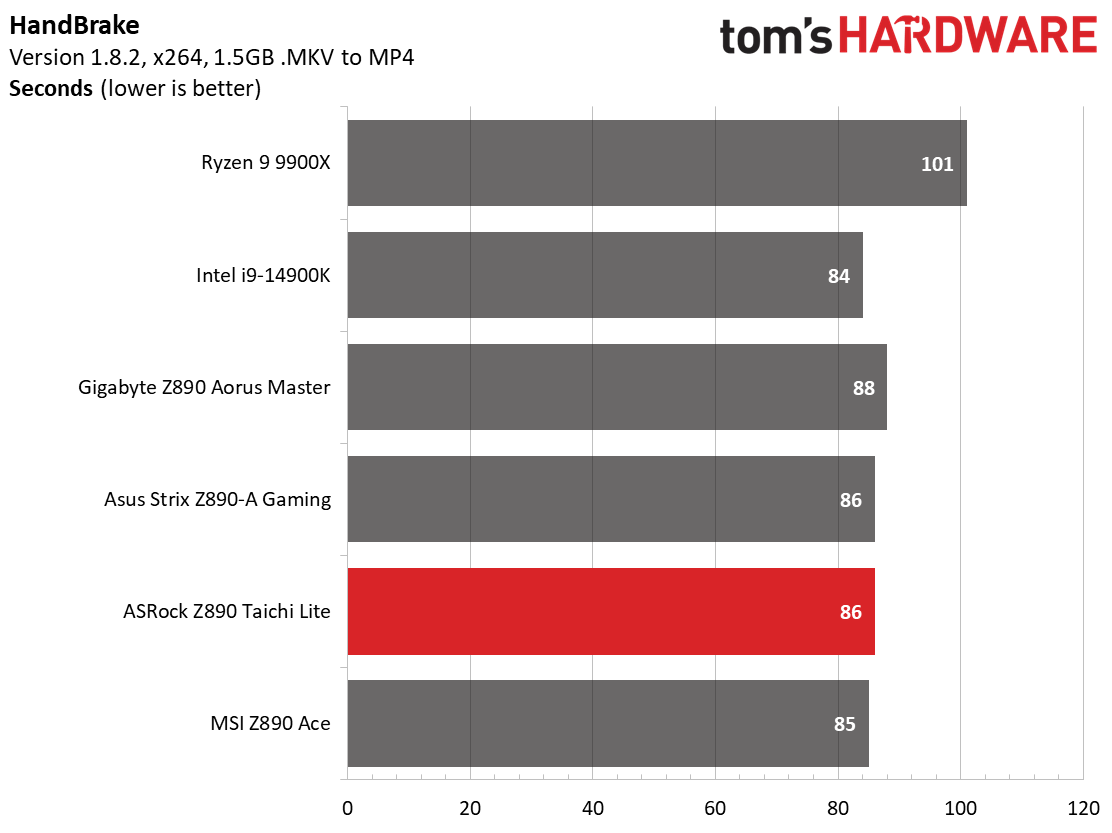
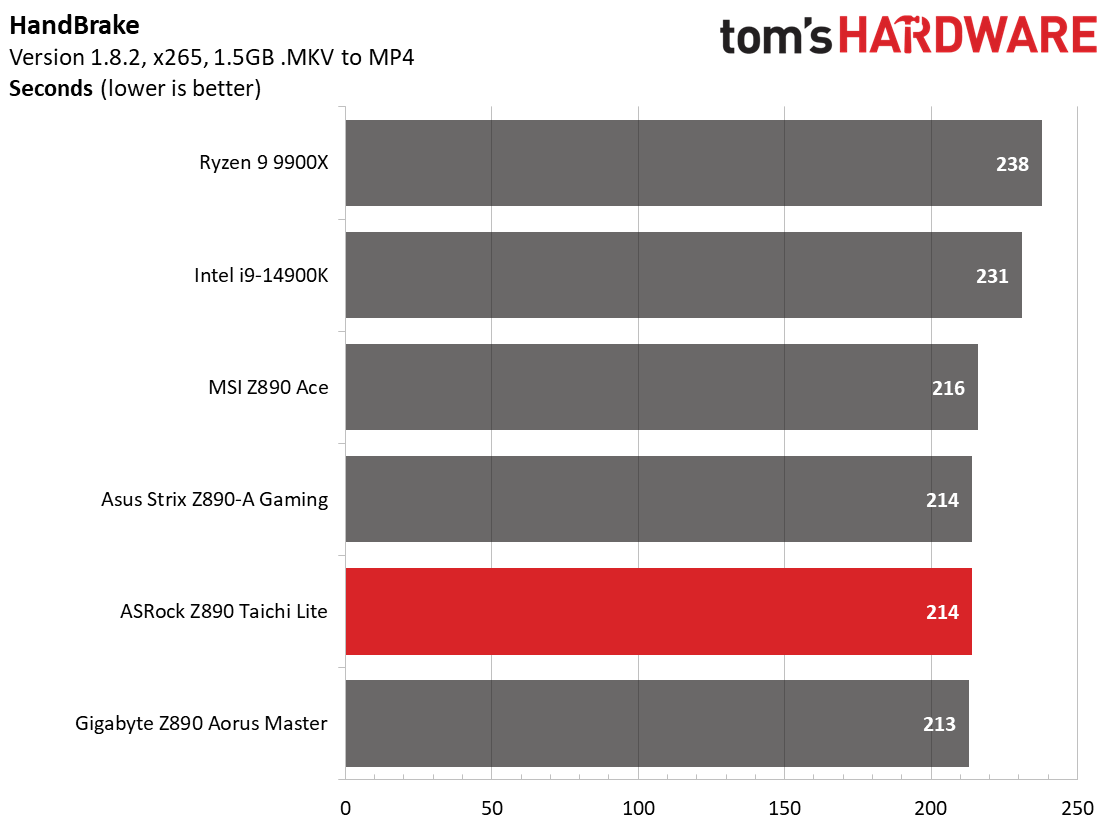
In our timed benchmarks, the Taichi Lite was average among the other boards we’ve tested. There’s nothing out of the ordinary so far.
3D Games and 3DMark
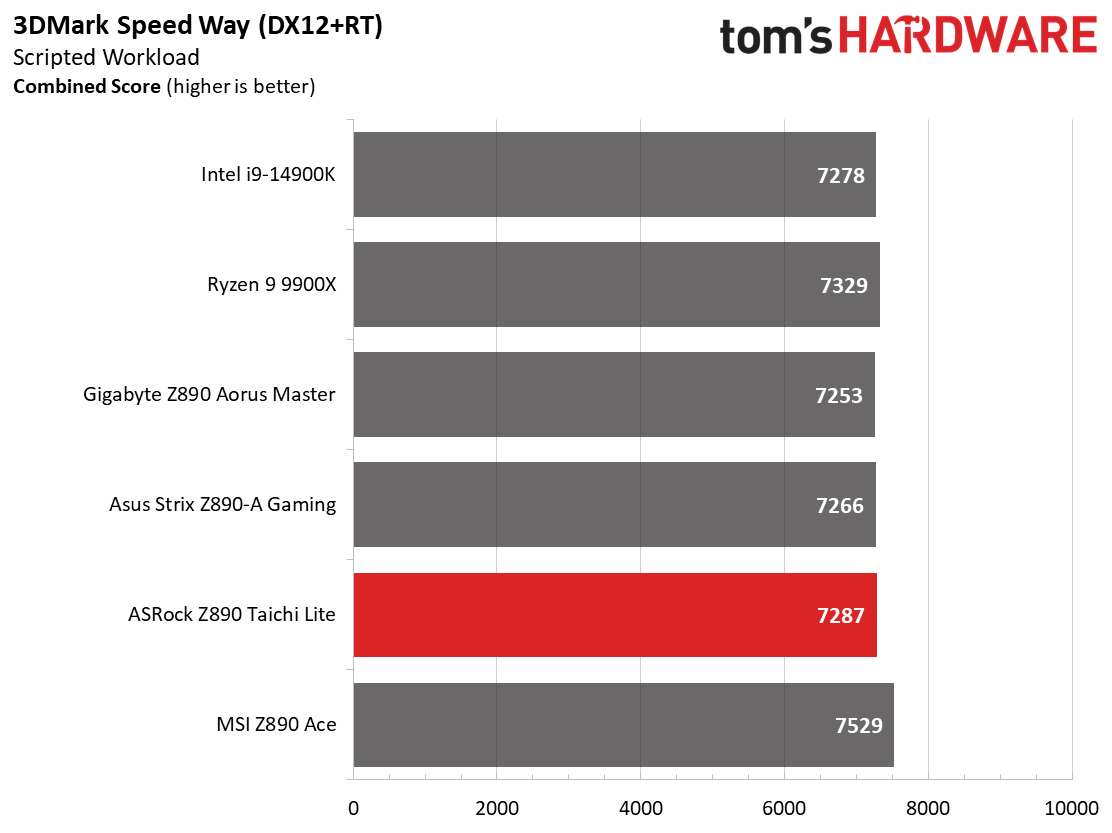
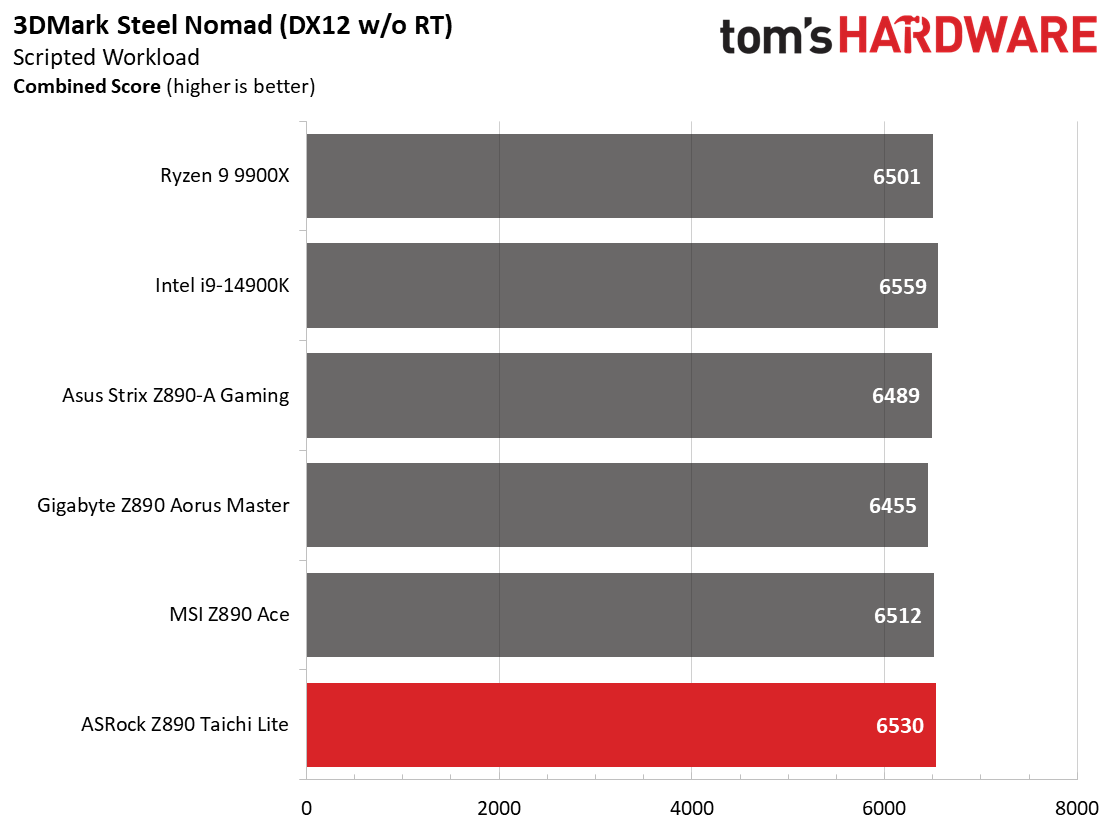
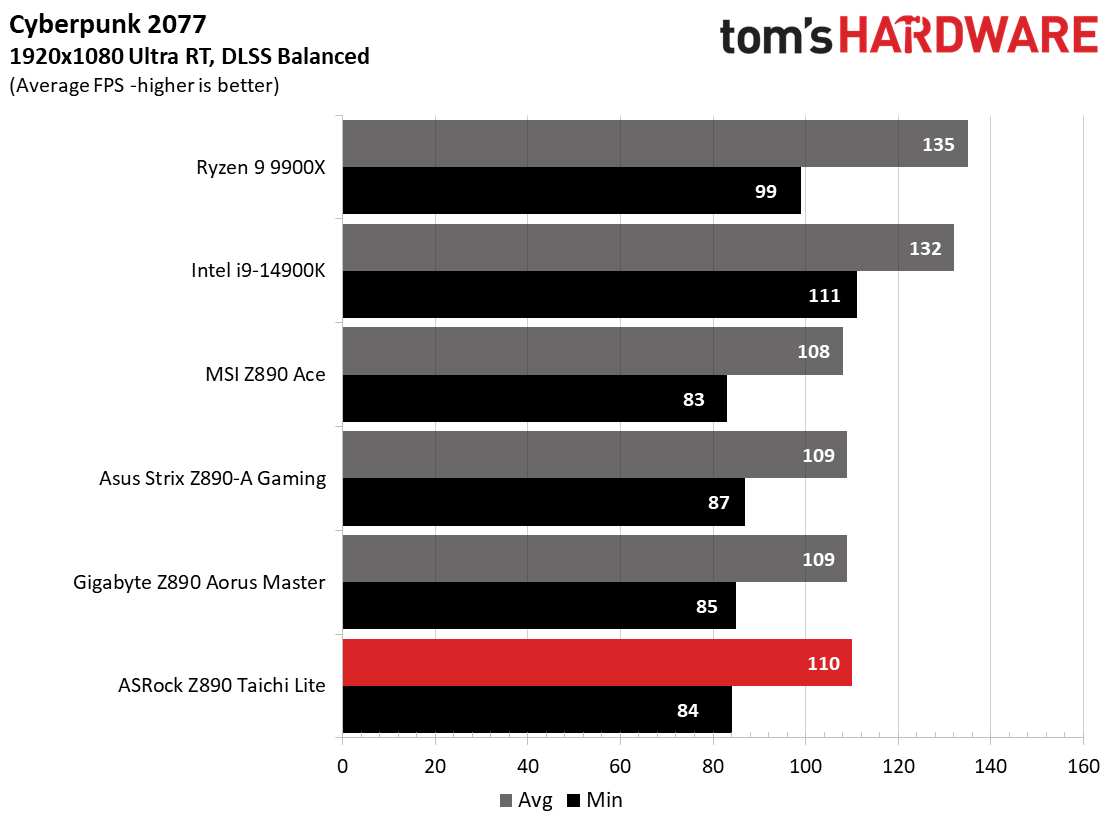
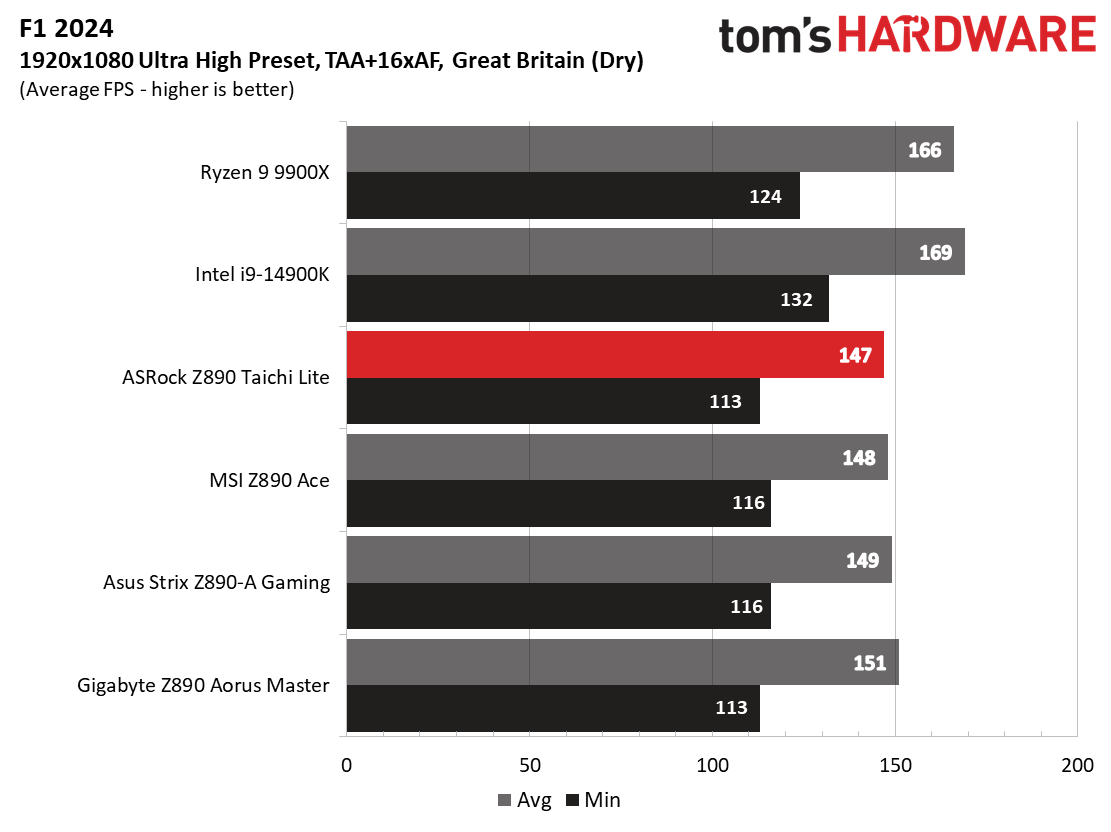
Starting with the launch of Zen 5, we’ve updated our game tests. We’re keeping the F1 racing game but have upgraded to F1 24. We also dropped Far Cry 6 in favor of an even more popular and good-looking game in Cyberpunk 2077. We run both games at 1920x1080 resolution using the Ultra preset (details listed above). Cyberpunk 2077 uses DLSS, while we left F1 24 to native resolution scaling. The goal with these settings is to determine if there are differences in performance at the most commonly used (and CPU/system bound) resolution with settings most people use or strive for (Ultra). We expect the difference between boards in these tests to be minor, with most falling within the margin of error differences. We’ve also added a minimum FPS value, which can affect your gameplay and immersion experience.
Although many will be disappointed in the gaming results, they are still capable chips, but just not leading the pack. 3DMark scores did not stand out and were in the middle of the tightly packed group. In F1 24, it posted 147 frames per second (FPS), which is the slowest result. Granted, the average is just under 149 FPS, so it’s not far off. Cyberpunk 2077 was spot on average. You have nothing to worry about if you’re primarily gaming on this machine.
Overclocking
Over the past few CPU generations, overclocking headroom has been shrinking on both sides of the fence while the out-of-box potential has increased. For overclockers, this means there’s less fun to have. For the average consumer, you’re getting the most out of the processor without manual tweaking. Today’s motherboards are more robust than ever, and they easily support power-hungry flagship-class processors, so we know the hardware can handle them. There are multiple ways to extract even more performance from these processors: manually adjust the settings or use some of the fancy AI overclocking board partners have been touting. Results will vary and depend on the cooling and quality of the CPU. In other words, your mileage may vary. Considering the above, we’re not overclocking the CPU for these review articles. However, we will try out our different memory kits to ensure they meet the specifications.
Get Tom's Hardware's best news and in-depth reviews, straight to your inbox.
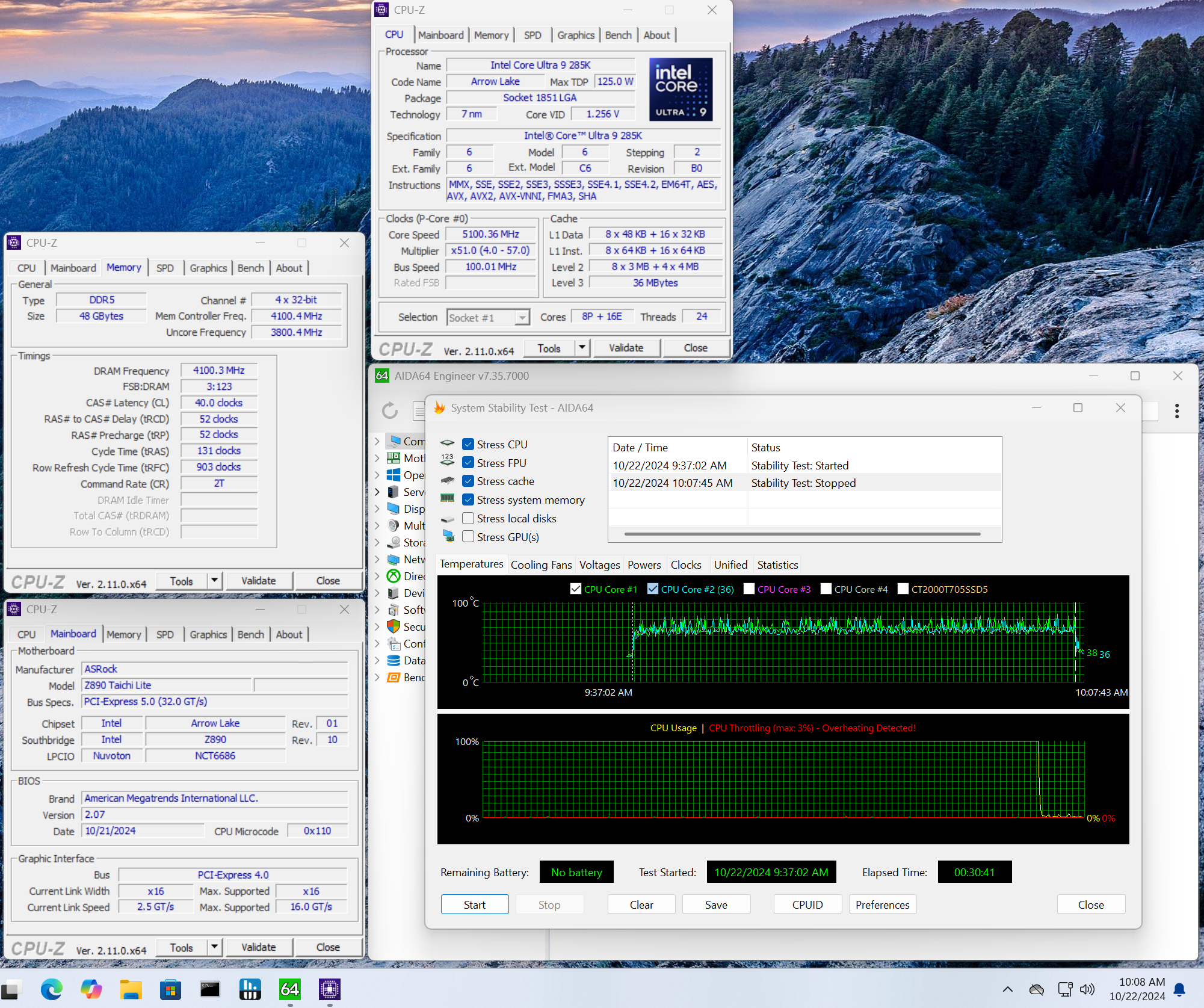
We tested multiple DIMMs from our baseline DDR5-6000 kit to DDR5-8200 using the two CUDIMMs from Kingston and GSkill. The Z890 Taichi Lite never flinched and ran all our kits during a stress test. With a listed limit of DDR5-9600, we’re not surprised as there is plenty of room to overclock or buy faster DIMMs.
Power Consumption / VRM Temperatures
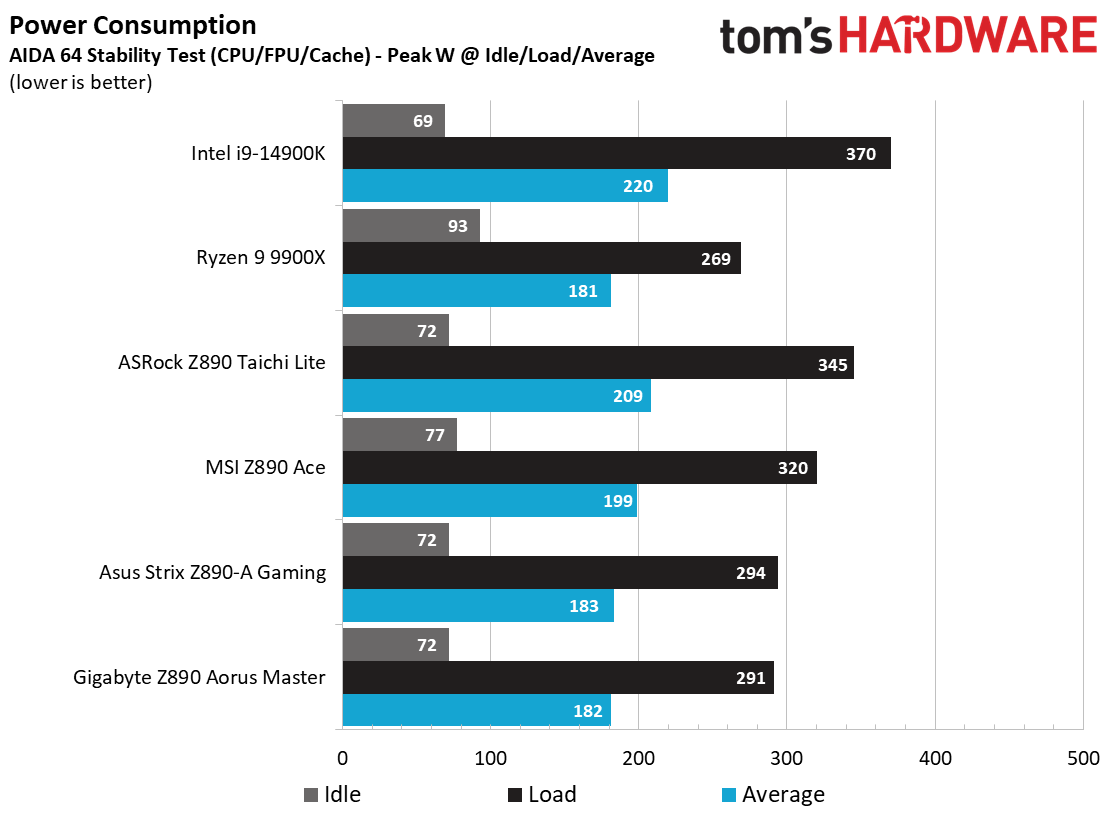
We used AIDA64’s System Stability Test with Stress CPU, FPU, Cach, and Memory enabled for power testing, using the peak power consumption value from the processor. The wattage reading is from the wall via a Kill-A-Watt meter to capture the entire PC (minus the monitor). The only variable that changes is the motherboard; all other parts remain the same. Please note we moved to use only the stock power use/VRM temperature charts, as this section aims to ensure the power delivery can handle flagship-class processors.
Our Core Ultra 9 285K system peaked at 345W at the wall (CPU peaked at 250W), and was the first system to allow the processor to reach the 250W limit imposed by the BIOS.
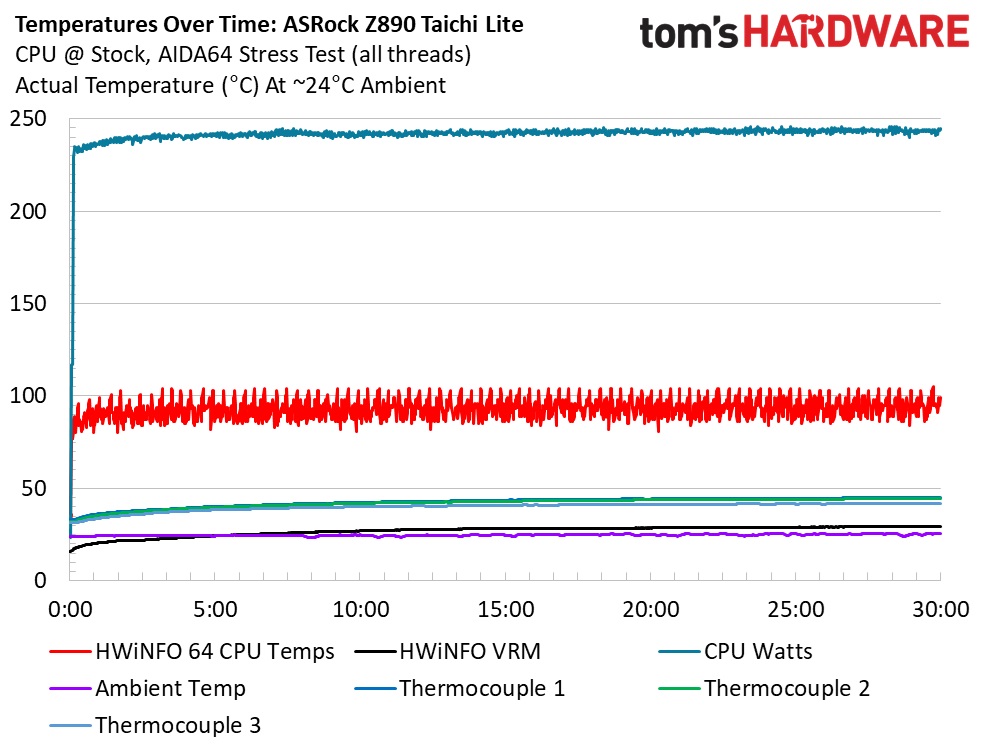
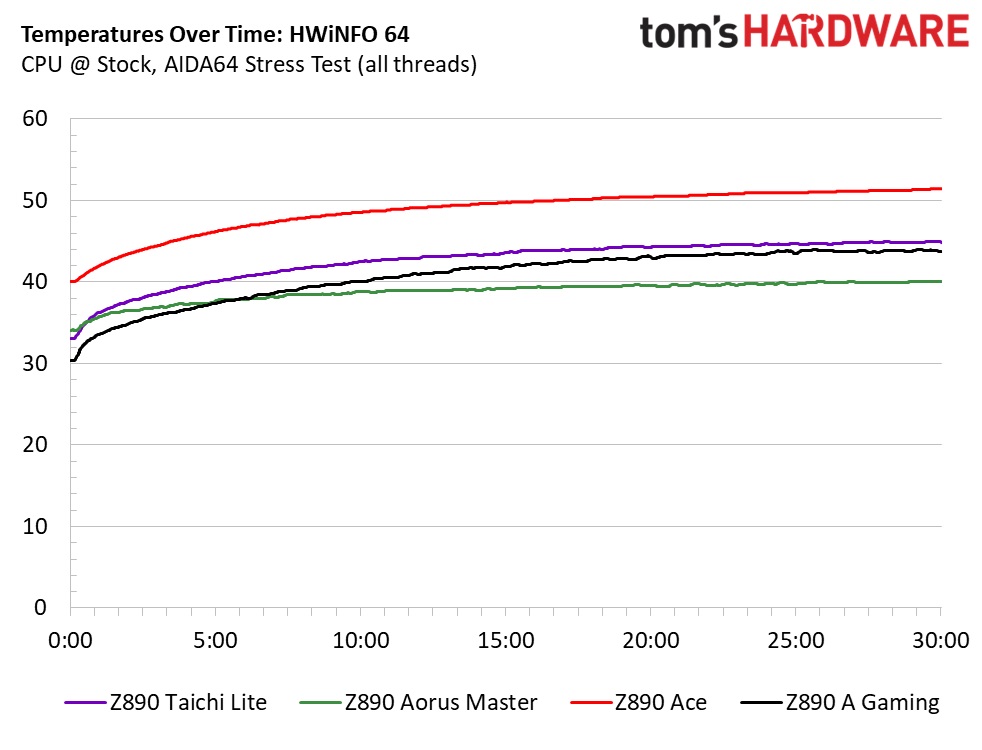
VRM temperatures on our passively cooled heatsinks peaked around 47 degrees Celcius, which is excellent for the ~250W stress test load. The Taichi Lite’s cooling can handle our high-end processor under long-term heavy loads, even when overclocked. No surprises here!
Bottom Line
The Z890 Taichi Lite is a handsomely-appointed, performant motherboard with a reasonable price tag. You get the same high-end hardware as the $499.99 Z890 Taichi without all the high-end bling that increases costs. ASRock saved money by replacing the actively cooled, RGB-laden VRM heatsink with a simpler but effective design. The same goes for the plate-style heatsink that covers all of the M.2s on the full-featured Taichi. It’s a decidedly average appearance, but not everyone wants luxury adornments, and many are willing to trade for better hardware or a lower price.
There’s plenty of competition around the Taichi Lite’s $399.99 MSRP. Gigabyte’s Z890 Aorus Pro (and Pro Ice), $399.99, offers users a more premium aesthetic, additional ‘Easy’ features and AI tuning. The Strix Z890-E is another good-looking option, also sporting many AI and user-friendly features, especially if you can find it under $425, as we see at the time of this writing. MSI’s Z890–A Edge Ti Wi-Fi ($369.99) and its white aesthetic turns heads and is the value board of this roundup and includes several Easy features.
In the end, we like what the Z890 Taichi Lite offers. It’s not quite the value proposition it used to be since Thunderbolt/USB 4 is now standard. Still, it does offer value for the money with its six M.2 sockets, flagship-class audio solution, and dual Ethernet ports. If you don’t mind shedding the premium skin for an RGB-free, more simple mid-range appearance or mind missing out on some user-friendly features to save some money, the Taichi Lite should be right up your alley.
MORE: Best Motherboards
MORE: How To Choose A Motherboard
MORE: All Motherboard Content

Joe Shields is a staff writer at Tom’s Hardware. He reviews motherboards and PC components.
